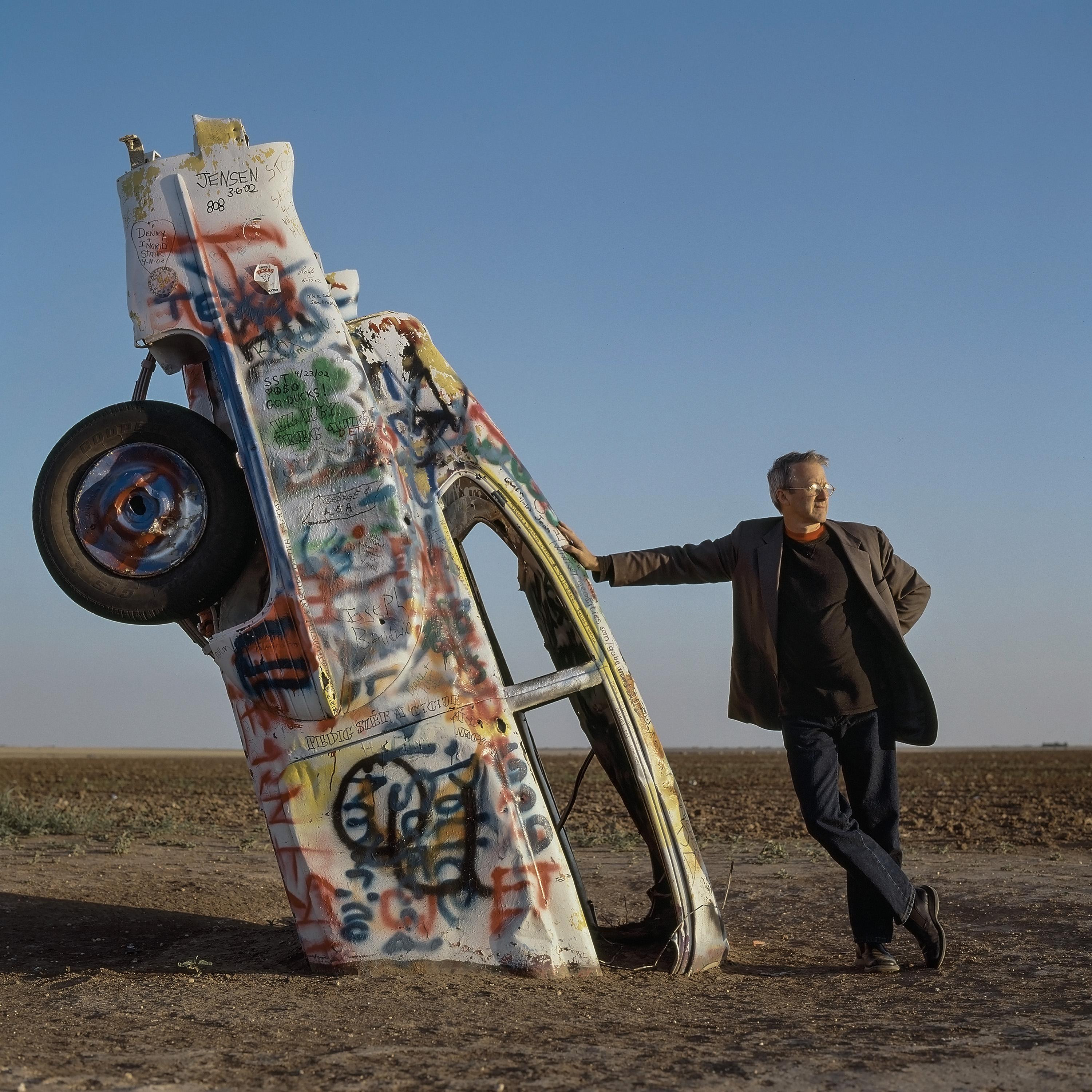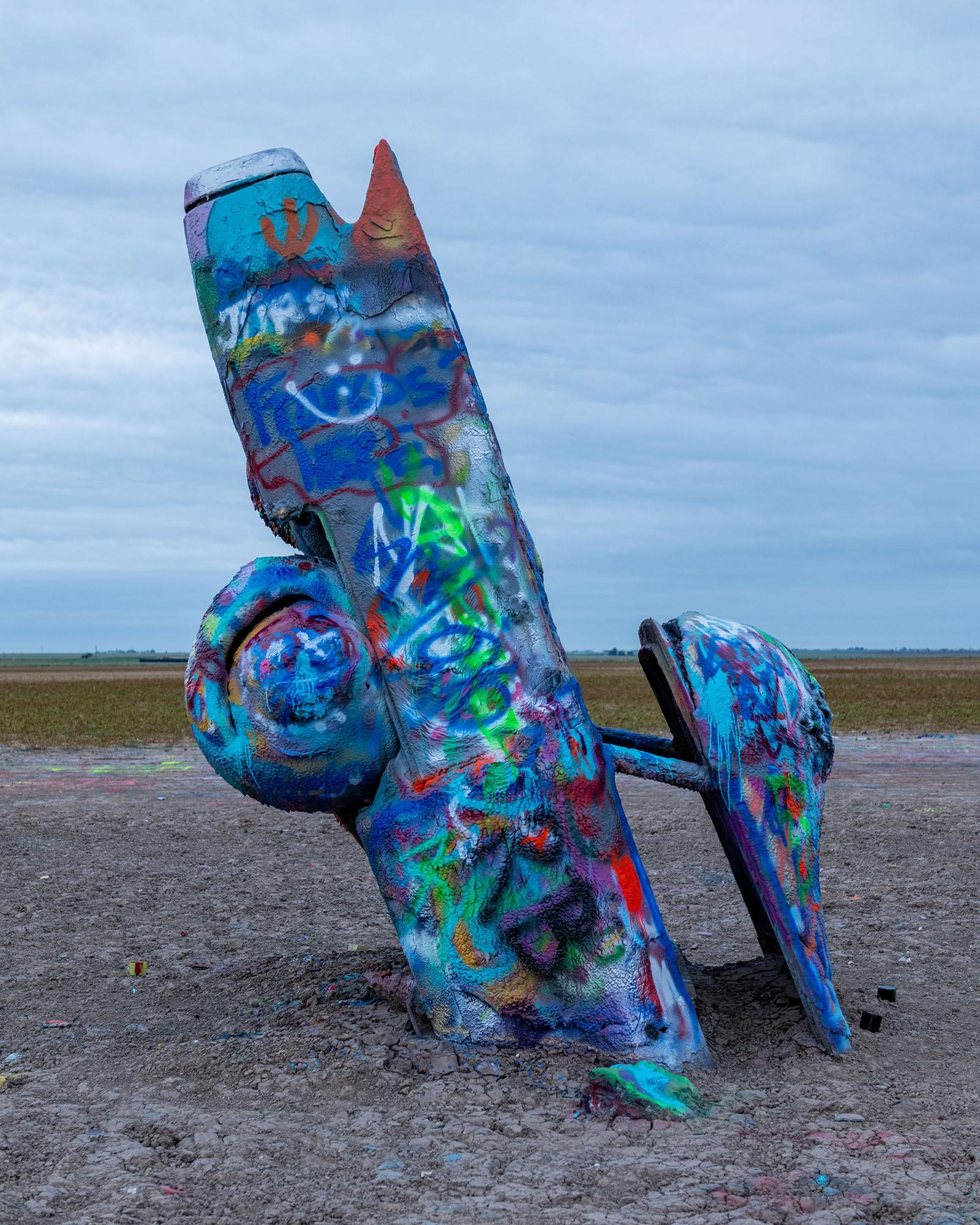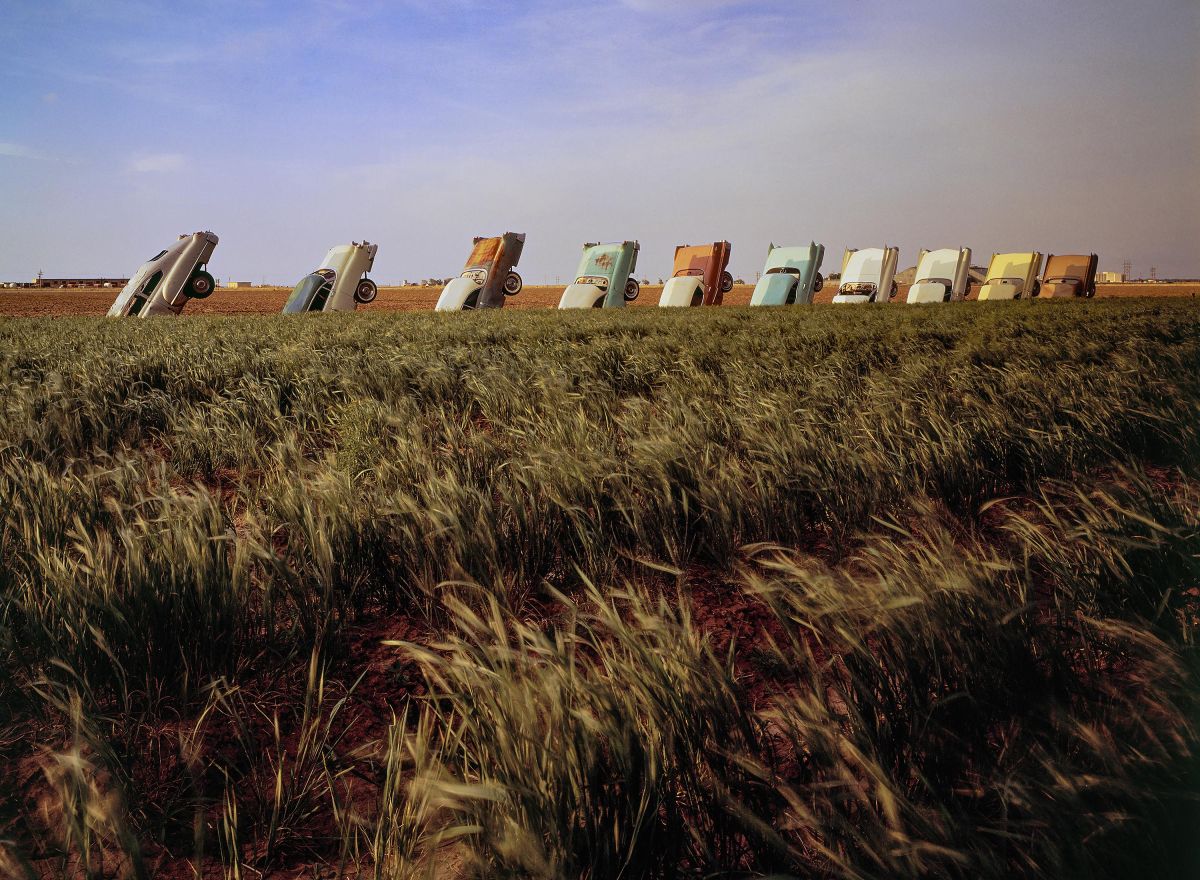On June 21, 1974, 10 Cadillacs, spanning models from 1949 to 1963, were driven into a Texas field and half-buried nose-first at a 60-degree angle, supposedly to mimic the angle of the Pyramids of Giza.
The result was Cadillac Ranch, a unique and eccentric art installation in Amarillo that has captivated the imagination of millions over the past 50 years. Conceived by the art group Ant Farm and backed by colorful local multi-millionaire Stanley Marsh 3, the installation was designed to surprise and delight, becoming an enduring symbol of American car culture and the evolution of the Cadillac tail fin.
In celebration of its 50th anniversary, Cadillac Ranch continues to draw visitors worldwide. Despite its age, the installation remains vibrant, a living, breathing artwork that has evolved far beyond its creators’ original vision.
Tail Fin Tribute
Chip Lord, Doug Michels and Hudson Marquez were the three co-founders of Ant Farm and a driving force behind Cadillac Ranch. Lord spoke to Autobody News, recalling the inspiration behind the project.
 Chip Lord leaning on Cadillac, circa mid 1980s. Photo Credit: Wyatt McSpadden
Chip Lord leaning on Cadillac, circa mid 1980s. Photo Credit: Wyatt McSpadden
“We wanted to create something that paid homage to the rise and fall of the Cadillac tail fin, a symbol of American automotive design in the 1950s and 1960s,” he said in a phone call from Northern California, where he is based. “We sought to make a sculpture -- one that had power because the cars were so identifiable.”
At its 10th anniversary, in 1984, Lord said spray paint arrived on the scene, and visitors began leaving their mark. Since then, Cadillac Ranch has become a creative canvas, resulting in countless layers of paint on the cars, their original forms now obscured by decades of colorful graffiti.
“It’s not even Cadillac Ranch anymore,” Lord admits. “Big lumps of paint have replaced the original car shapes, and yet, in a way, that’s what makes it so special. It’s become a living piece of art.”
He said some people even take chunks of the paint, polish them and sell them as “caddilite.”
For its 50th anniversary celebration on June 22, Lord said they painted the Cadillacs with gray primer, “preparing them for the next 50 years.”
Curating the Evolution
Alex Gregory, curator of the Amarillo Museum of Art, organized an exhibition documenting Cadillac Ranch’s ever-changing nature.
“It’s fascinating to see how it’s evolved from a tribute to car culture into a global phenomenon,” Gregory said. "What started as a quirky roadside attraction has become something much bigger -- a cultural landmark with which millions have interacted.”
If you’re in the area, the Amarillo Museum of Art is hosting an exhibit of Cadillac Ranch though Aug. 25. Aug. 10 is Family Day, featuring live music, food truck, art activities and more.
The Amarillo Museum of Art exhibition features artifacts from Cadillac Ranch, including photographs, videos and even pieces of the original cars. Along with objects like an original hubcap from one of the Cadillacs, the display features photos by Wyatt McSpadden, the famed photographer who has documented the Cadillac Ranch over the past 50 years and depicted the installation.
A Global Attraction
 Photo Credit: Wyatt McSpadden
Photo Credit: Wyatt McSpadden
Located just outside Amarillo, Cadillac Ranch sits on a stretch of Interstate 40 that parallels the historic Route 66, making it a must-see for roadsters. The installation’s location and unique history have made it a magnet for tourists worldwide.
“I’ve met all kinds of people out there,” said Lord. “Locals, tourists and other artists. Everyone comes away with their interpretation of what it means.”
For Gregory, Cadillac Ranch’s enduring appeal lies in its accessibility. “It’s free to visit and open to everyone,” he said. "You just drive up, park on the frontage road, and walk a couple hundred yards to the cars. There’s something special about that simplicity.”
Mixed Feelings on the Future
As Cadillac Ranch celebrates its 50th anniversary, its creators and curators reflect on its legacy with pride and ambivalence. “I don’t know if it’s still art,” Lord mused. “It’s something, though. It’s become a part of the landscape, a part of the culture.”
For Gregory, the anniversary is a time to celebrate not just the past but the ongoing story of Cadillac Ranch. “It’s amazing to think that something created 50 years ago is still here, still attracting people, still making an impact,” he said. “But it’s also a reminder that art, like life, always changes. Cadillac Ranch isn’t the same as in 1974, and that’s OK. That’s kind of the point.”
As the summer once again illuminates the tail fins of Cadillac Ranch, the installation is an enduring reflection of the power of creativity, collaboration and the American spirit. Whether it’s a symbol of automotive history, a canvas for graffiti artists, or simply a quirky roadside attraction, Cadillac Ranch continues to inspire, confuse and delight all who visit.










Leona Scott